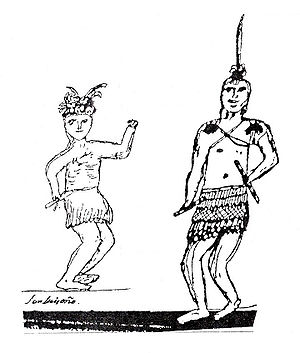
In my further search for Uncle Henry's legacy, I came upon this incredible link, which has "all things Luiseno" links. In it, I discovered more information on Luiseno/Cahuilla legends, vocabulary, current history and even ethnobotany. Uncle Henry, no doubt, had a huge role in gathering of all the information on the website. According to my reporter friend, Uncle Henry Rodriguez has been actively participating in Luiseno language research project with Cal. State San Marcos and other local educational institutions since 1940. After coming back a decorated veteran from WWII, he continued to be active in inter-tribal politics, often angering various local tribes with his outspokedness. David Ross(reporter for Valley Roadrunner in Valley Center, California wrote that "the women said to the young people "he knows what he is doing, leave him alone"". Putting aside his anger at the injustices of the white people towards Native Californians, Uncle Henry tirelessly worked with everyone who wanted to preserve his heritage. He was elected Honorary Professor by Cal. State San Marcos, the first such title given to Native American in this state.

![Reblog this post [with Zemanta]](http://img.zemanta.com/reblog_e.png?x-id=d833d675-3010-4afc-bfd5-4300012fac1d)

![Reblog this post [with Zemanta]](http://img.zemanta.com/reblog_e.png?x-id=4c7b8aef-f09c-4164-80e2-c58d298c8a27)